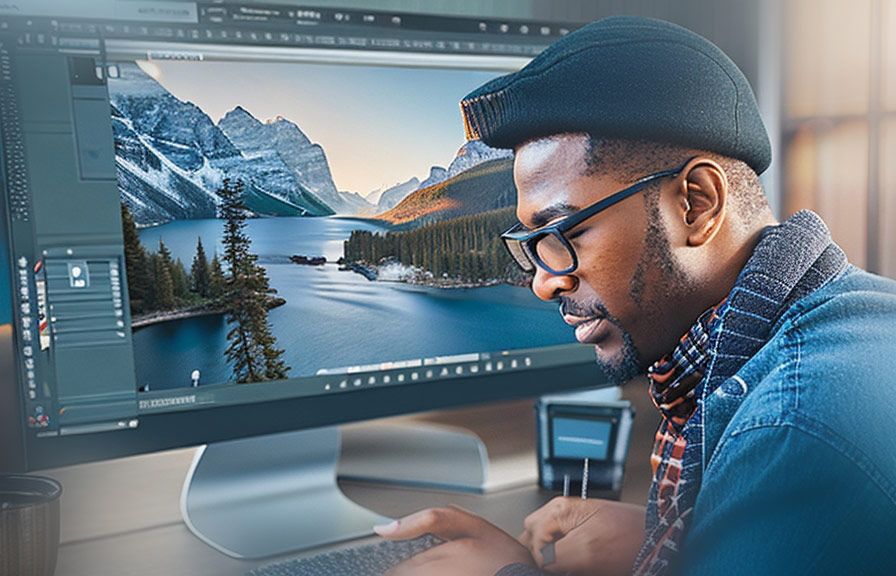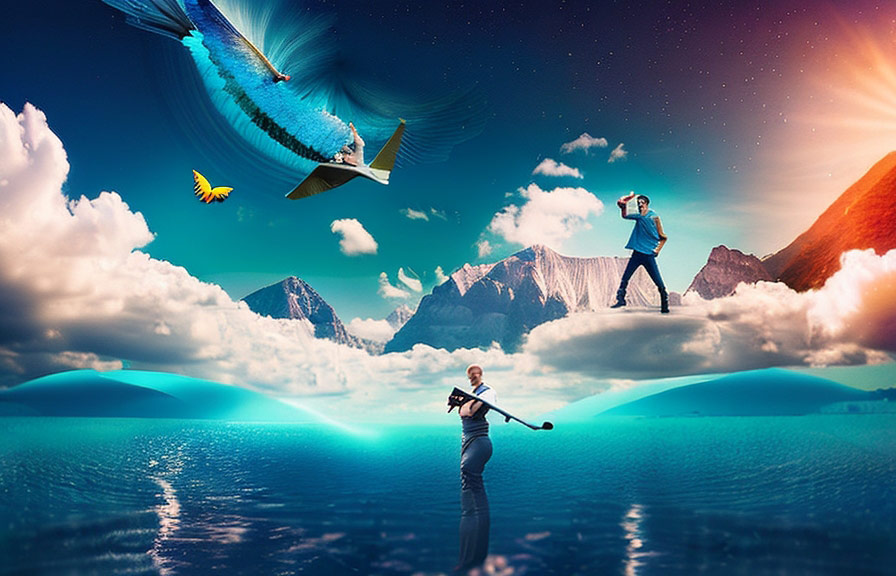Did you know? the concept of photo manipulation dates back to the 19th century, long before digital technology was invented. early photographers would physically cut and paste images together to create surreal compositions.
Welcome to the fascinating world of photo manipulation, where artists and designers use their creativity to transform ordinary photographs into surreal and artistic masterpieces. in this post, we will explore the techniques and tools used in photo manipulation, with a focus on photoshop manipulation.

Prepare to be amazed as you discover the possibilities of image manipulation and learn a fact or two that you probably never heard of.
What is photo manipulation?
Photo manipulation is the process of altering or transforming a photograph using various techniques and tools to achieve a desired outcome. it can involve anything from simple adjustments, like cropping and color correction, to more complex alterations, such as adding or removing elements, merging images, or creating entirely new scenes.
Photoshop manipulation is a popular form of photo manipulation, as adobe photoshop is the industry-standard software for image editing and manipulation. with its powerful tools and features, photoshop allows artists to unleash their creativity and create stunning, surreal images that leave viewers in awe.
Techniques used in photo manipulation photoshop
There are numerous techniques used in photo manipulation. some of the most common ones include:
1. Image compositing: this involves combining multiple images or elements from different sources into a single, coherent scene. compositing is the backbone of many surreal and artistic photo manipulations, as it allows artists to create entirely new worlds and stories.
2. Layer masking: layer masks in photoshop allow artists to selectively show or hide parts of an image, making it easier to blend elements together seamlessly. this is particularly useful when combining multiple images or adding new elements to a scene.
3. Color adjustments: adjusting the colors, contrast, and brightness of an image can drastically change its mood and atmosphere. by making these adjustments, artists can create a unified color palette and ensure that all elements within the composition look like they belong together.
4. Retouching and restoration: sometimes, the original images used in a manipulation require retouching or restoration to remove imperfections or enhance certain details. this process can involve anything from removing unwanted objects and blemishes to improving the overall sharpness and clarity of an image.
5. Digital painting and illustration: in some cases, artists may choose to incorporate digital painting or illustration techniques into their photo manipulations. this can involve hand-painting elements, textures, or details directly onto the image using a graphics tablet and stylus.
The creative process behind image manipulation
The creative process behind photo manipulation is often as unique as the artist themselves. however, there are some general steps that many artists follow when creating surreal and artistic images:
1. Idea generation and concept development: the first step in any creative process is coming up with an idea. this can involve brainstorming, sketching, or gathering inspiration from various sources, such as other art, music, or personal experiences.
2. Image sourcing and selection: once the concept has been developed, artists will search for the images and elements they need to bring their vision to life. this can involve using stock images, personal photographs, or even creating their own elements through photography or digital painting.
3. Image preparation and pre-editing: before the actual manipulation process begins, images may need to be pre-edited to ensure they work well together. this can involve cropping, resizing, and adjusting the colors or exposure to ensure a more seamless integration of elements.
4. Image manipulation and editing: with all the necessary images and elements prepared, artists can begin the actual manipulation process. this can involve anything from simple adjustments to complex compositing, layer masking, and digital painting techniques.
5. Post-processing and final adjustments: after the main manipulation work is complete, artists may make final adjustments to the image, such as tweaking the colors, adding filters, or applying sharpening to ensure the final result is polished and professional.
A surprising fact about photo manipulation
While photo manipulation may seem like a modern phenomenon, the concept has actually been around since the early days of photography. in the 19th century, photographers would physically cut, paste, and retouch negatives or prints to create manipulated images.
One famous example is the 1865 portrait of abraham lincoln, in which his head was placed onto the body of another politician, john calhoun.
Unleashing your creativity with photo manipulation
Photo manipulation offers endless possibilities for artists and designers to create surreal and artistic images. with the right tools, techniques, and a healthy dose of creativity, you can transform ordinary photographs into extraordinary works of art.
So why not give photo manipulation a try and see what amazing worlds you can create?
